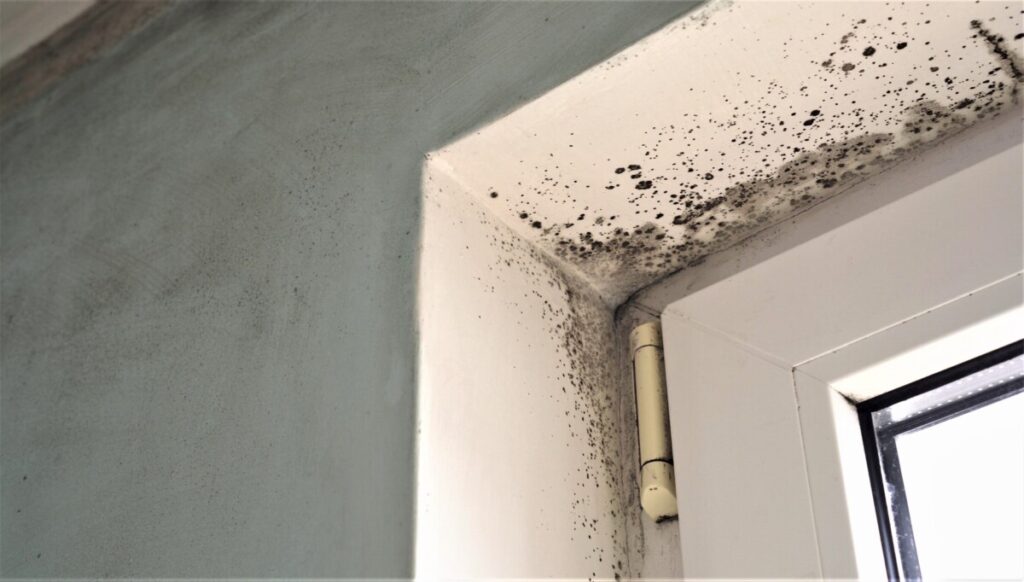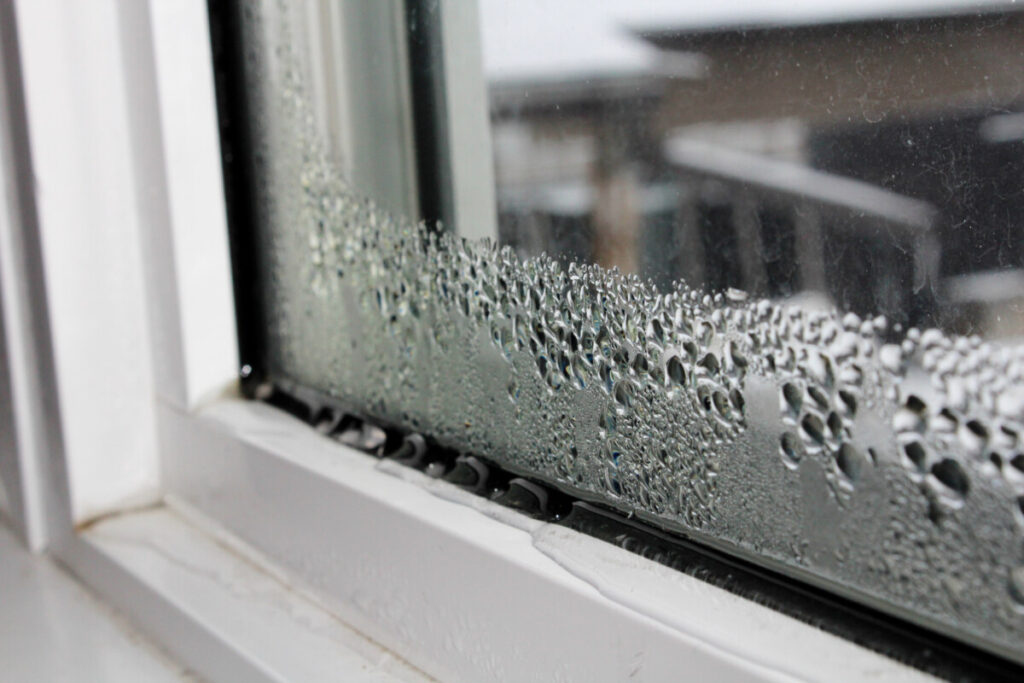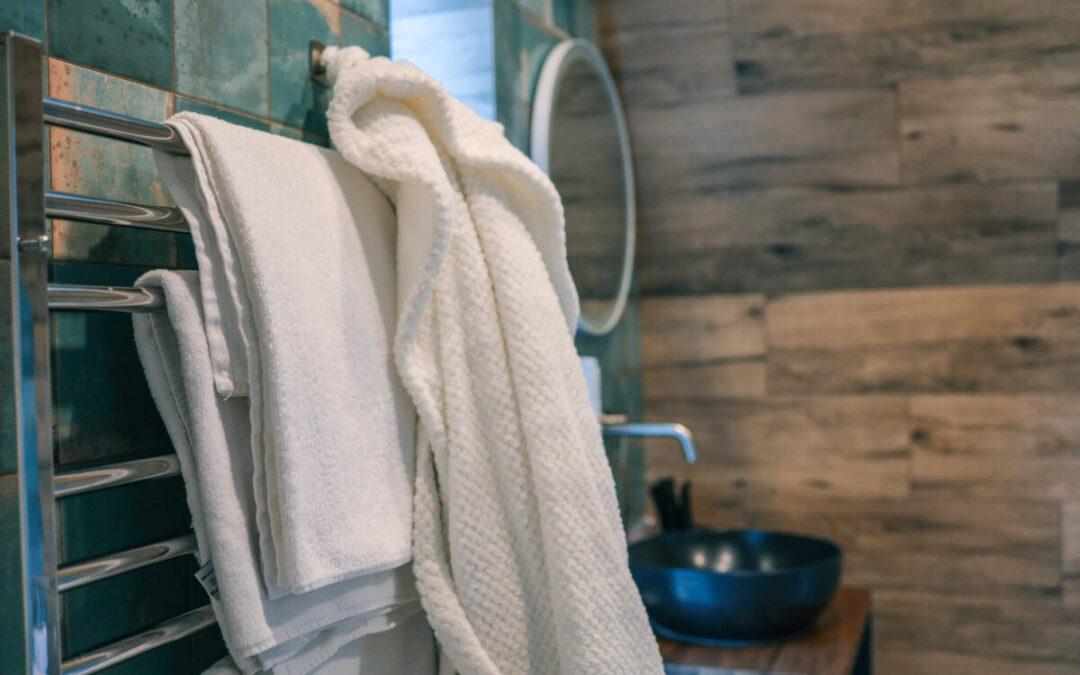
By combining simple daily habits with effective ventilation and moisture-resistant finishes, not only can you reduce humidity in your bathroom, but you can also create a space with a healthier and fresher environment.
Bathrooms are notorious spaces for humidity and dampness due to the buildup of steam and moisture from showers and baths. Without proper control, this can lead to mould, peeling paint and unpleasant odours. When you tackle your bathroom’s humidity head-on, not only are you providing comfort, but you are also protecting your bathroom’s structure and finish, an especially important task for keeping your bathroom more accessible.
What Causes Humidity in a Bathroom?
Every time you have a bath or shower, moisture fills the room and condenses on surfaces. Often, bathrooms are rooms in our homes with limited airflow, especially if you do not have any windows or ventilation systems. This makes them the perfect environments for damp air to linger. Over time, this excess humidity and dampness can damage your grout and sealant, make cleaning more difficult, damage your surfaces and encourage mould growth.

What Are the Risks of a Humid Bathroom?
Not only is a humid bathroom physically uncomfortable, they can also come with very real risks:
- Mould and mildew thrive in damp conditions and can cause unpleasant odours and even trigger allergies and colds.
- Dampness can cause paint and wallpaper to peel and stain.
- Your grout and sealant can weaken, leading to water damage and leaks.
- Your fixtures, especially in walk-in showers or around walk-in baths, can rust faster when exposed to excess moisture and humidity.
There are also the safety risks to consider. If your bathroom is built for accessibility, then ensuring you prevent a buildup of moisture and reduce humidity is very important. Excess moisture and humidity can make surfaces slippery, which can be incredibly dangerous, especially for individuals with mobility needs. Worried about safety in your bathroom? Grab rails are a quick fix and a great way to ensure you have support in your bathroom.
How to Reduce Humidity in a Bathroom
There are several ways to reduce humidity in your bathroom, from simple solutions you can put into practice today to larger upgrades that offer long-term protection.
Change your everyday bathroom habits
There are some simple everyday habits that can make a big difference in the level of moisture and humidity in your bathrooms. Using a squeegee after your shower to wipe excess moisture from the shower screen or tiles helps to remove surface water before it has a chance to evaporate into the air, causing humidity. Add airflow to the room by opening windows and doors after your bath or shower to help steam disperse quickly before it can condensate on walls. Even reducing the temperature of your shower slightly or taking shorter showers can help significantly reduce bathroom humidity.
Improve ventilation
The most effective way to reduce bathroom humidity is by using an extractor fan. Modern extractor fans even come with built-in humidity sensors that automatically switch on when moisture levels rise, removing the need for you to monitor moisture levels and to remember to turn the fan on. Extractor fans work best when clean and clear from dust. Clean the fan cover and blades regularly to prevent dust and grime build-up, which can make your fan less effective. Where possible, pair your extractor fan with a window vent or ceiling fan to help further improve the airflow in your bathroom.
Use dehumidifiers and moisture absorbers
Some bathrooms lack extractor fans and even bathroom windows to help with airflow. In these situations, a portable dehumidifier is an excellent solution. These units actively pull water from the air and store it in a tank that you simply empty when needed. If you want a smaller and more discreet option, moisture absorbed can help, especially in small and compact spaces. Another great and natural solution for reducing humidity in your bathroom is to add some easy to care for humidity loving plants that will absorb moisture naturally. For more information, check out our guide on the best plants for your bathroom.
Waterproof your surfaces
An added benefit to reducing the humidity in your bathroom is that you will prevent the excess moisture from causing long-term damage. Protective finishes for your surfaces and further waterproofing is a great way to reduce bathroom humidity. Mould-resistant paints, waterproof grout, and anti-condensation coatings all act as barriers that stop water from seeping into the walls, ceilings and floors of your bathroom. Not only will this extend the lifespan of your bathroom, but it will also make it easier and quicker to clean. If you are considering waterproofing your surfaces, our guide to the best paint for bathroom ceilings is a great place to start.
While smaller quick fixes are better than nothing, if you want to significantly reduce the humidity in your bathroom, you might want to consider bigger upgrades to your bathroom to help make it more resilient to moisture. Adding insulation is a great way to reduce cold walls and ceilings, which are prime spots for condensation build-up. Underfloor heating speeds up the drying process and also keeps your bathroom pleasant and warm.
Upgrading your airflow with modern extractor fans with humidity sensors or installing whole-room ventilation systems will ensure consistent airflow in your bathroom. Last but certainly not least, never ignore leaks. Even the smallest drip can create persistent dampness, which encourages mould and will cause damage to your bathroom over time.

How to Monitor and Maintain Healthy Humidity Levels
What should bathroom humidity be? The easiest way to track humidity is to use a small digital hygrometer. Ideally, your bathroom humidity will be between 40%-60%, anything higher means mould is likely to form. As well as keeping an eye on the humidity levels, regular cleaning will help reduce the amount of moisture and keep your bathroom fresh. If you want inspiration for scents to help keep your bathroom fresh, then check out our guide, 8 of the best homemade scents to make your bathroom smell amazing.
To properly reduce bathroom humidity, it is all about keeping up with those daily habits and considering smart long-term solutions. From wiping down surfaces and using extractor fans to opening windows for additional airflow and replacing old grout and sealant, each step helps keep your bathroom fresher, healthier and safer for longer.
Thinking about upgrading your bathroom or making your bathroom more accessible? Then check out our walk-in bath and walk-in shower solutions, where we have a wide range of different options to help your bathroom experience become more enjoyable.






